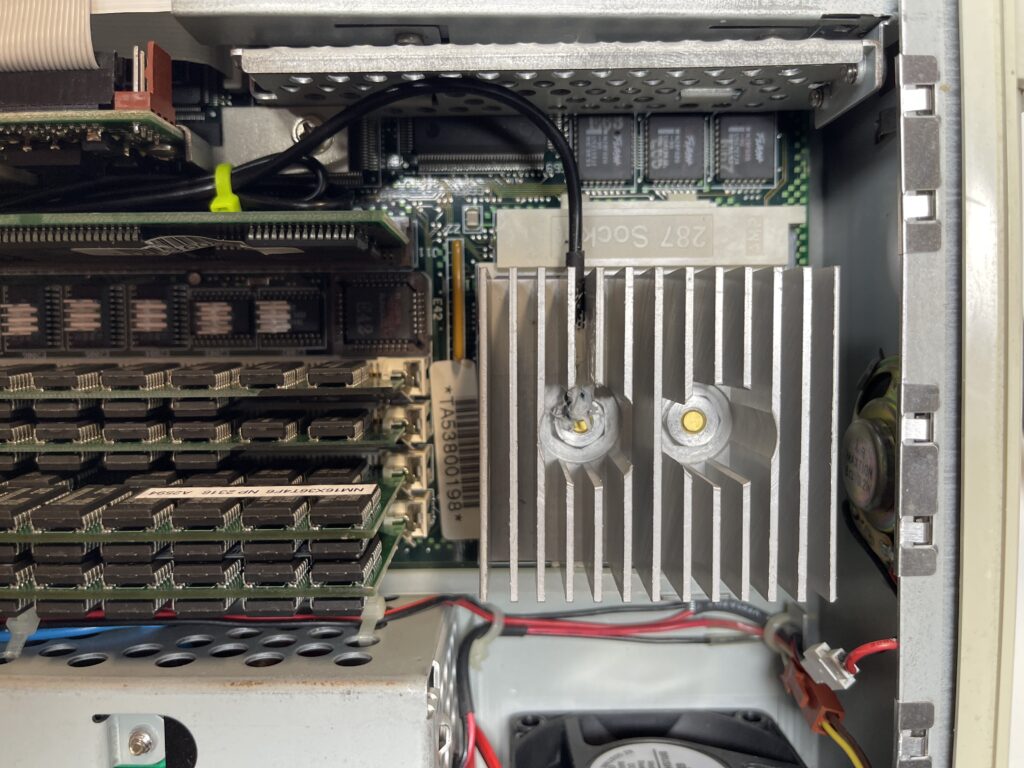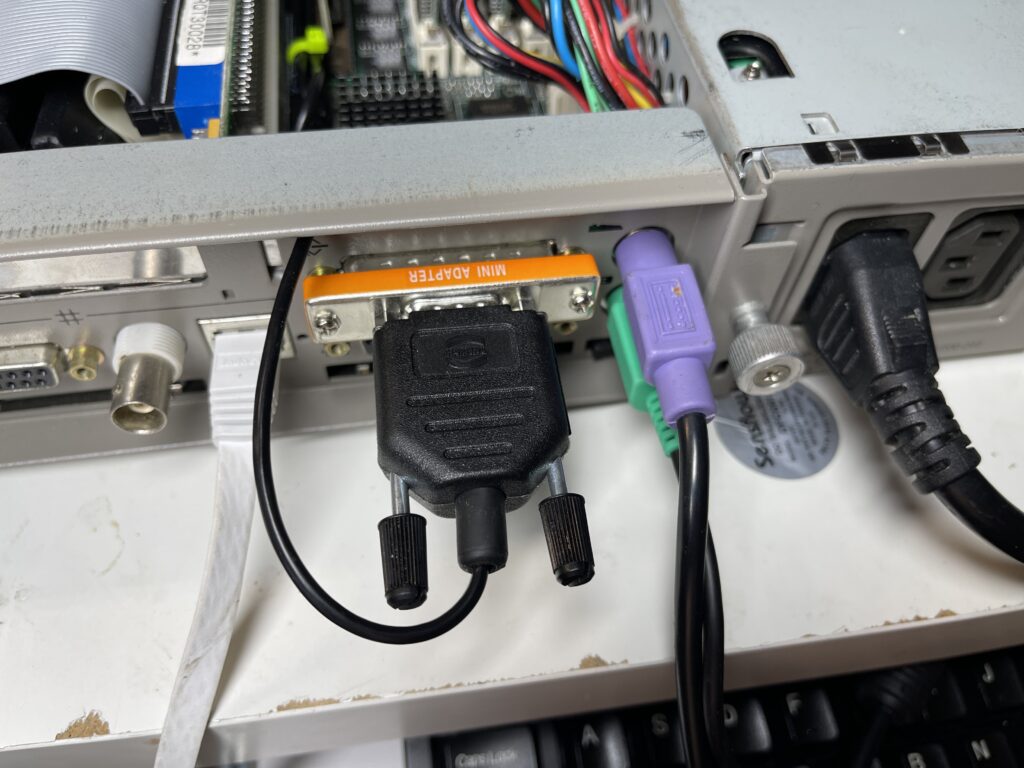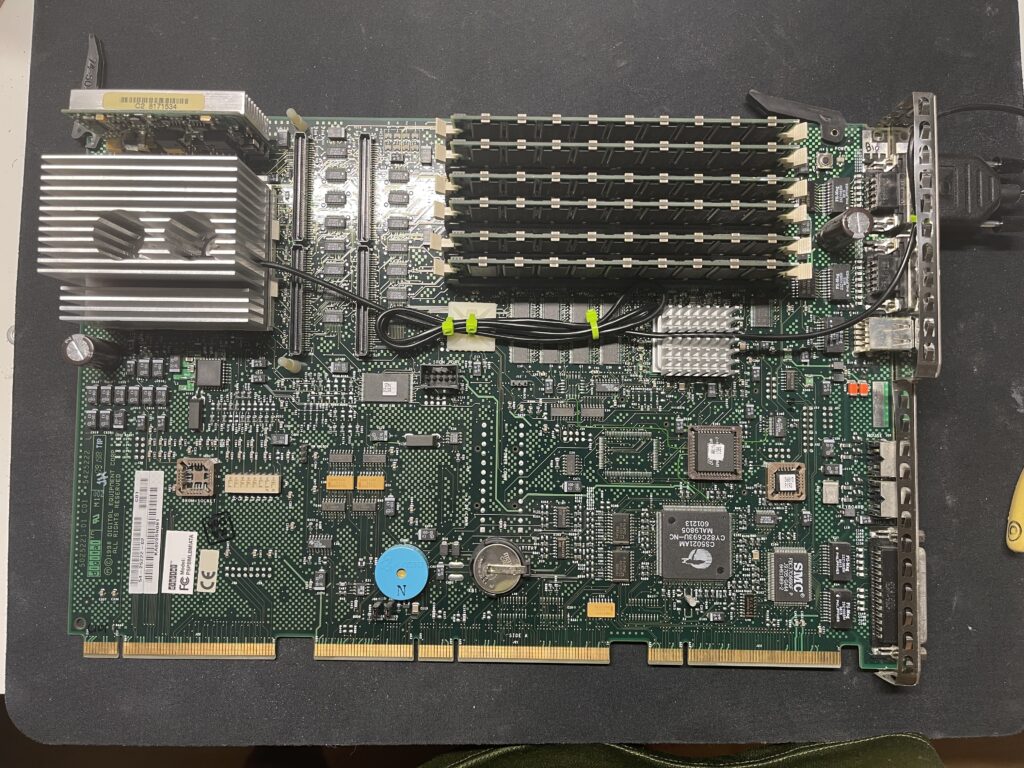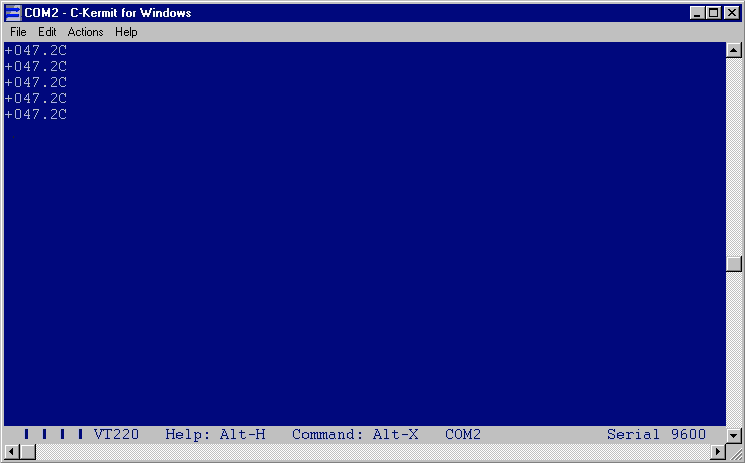(This is a guest post by Antoni Sawicki aka Tenox)
I’m preparing a Windows NT RISC exhibition for VCF West 2023. While the CHM building is air conditioned, it’s far far from ideal and we have a rather hot summer. Most of the vintage machines lack CPU power management. Some, such as Alphas, are notorious for overheating. Despite installing modern fans and heatsinks, this still makes me uneasy. I wanted to come up with some thermal monitoring system to see whats going on in real time. Maybe alert or shut down if things go out of hand.
For a while now I been thinking about using Arduino with a thermistor. It would read the temperature sensor and send the data via serial port to the host. This should universally work for most old computers, as they commonly have serial ports. However, upon some prototyping I realized that between custom pcb/wiring, power requirements and TTL to RS232 converter, the whole thing was becoming a little too complicated for what I really wanted. Fortunately I came across a rather ingenious solution – someone sells this item on eBay:

https://www.ebay.com/itm/231213936167
It’s basically a thermal probe with RS232 interface, emitting a plain text ASCII string output. No drivers or software required. They are a little bit pricey. Perhaps readers can find a cheaper version. However it’s absolutely a perfect solution for what I really wanted. Note that the seller can make shorter cables on request. The default 3m is insanely long for this purpose.
With help of some thermal glue, installed the probe in to the CPU heat sink and routed the cable to a COM port in the back.



Above pictures are from Multia and PWS.
You can simply read the temperature as an ASCII string from the COM port:

However since this is a prestigious event I wanted something fancier. Also a simple terminal can’t really tell when was the data received and therefore is current. I banged out a simple Win32 app to have something nice on the screen:

If there is no update from serial port in last 10 seconds, “no data” will be shown. The text label changes color if the temperature goes over a threshold to warn if things are getting too hot.

I even added a thermal shutdown, if it goes over a critical value. However this only works on Windows 2000 and above. Earlier Windows NT versions lacked ACPI HAL support to invoke power down. Fortunately this will work nicely for 2210 build on PWS 500 and Windows XP on Itanium!
After VCF I’ll make something for Unix and VMS as well. Perhaps also a service / daemon version that can run in the background and doesn’t require GUI.
Source code and binaries: https://github.com/tenox7/readtemp

For the Multia, one of the biggest culprits for overheating was a small timer chip attached to the rear of the board. That’s partly why the Multia worked better when standing vertically, as otherwise the board itself made it harder for heat to dissipate.
There was a guide online at one point explaining how to replace the offending chip with a compatible newer replacement that generated less heat.
Thanks! I mentioned the heat death chip in the original Multia article: https://virtuallyfun.com/2019/09/03/multia-under-thermal-camera/. Interestingly the chip was only problem in earlier / lower end Multias. In the 233 MHz model they replaced the single chip with 2 different ones. I have slapped a heatsink on it and it’s all good now.